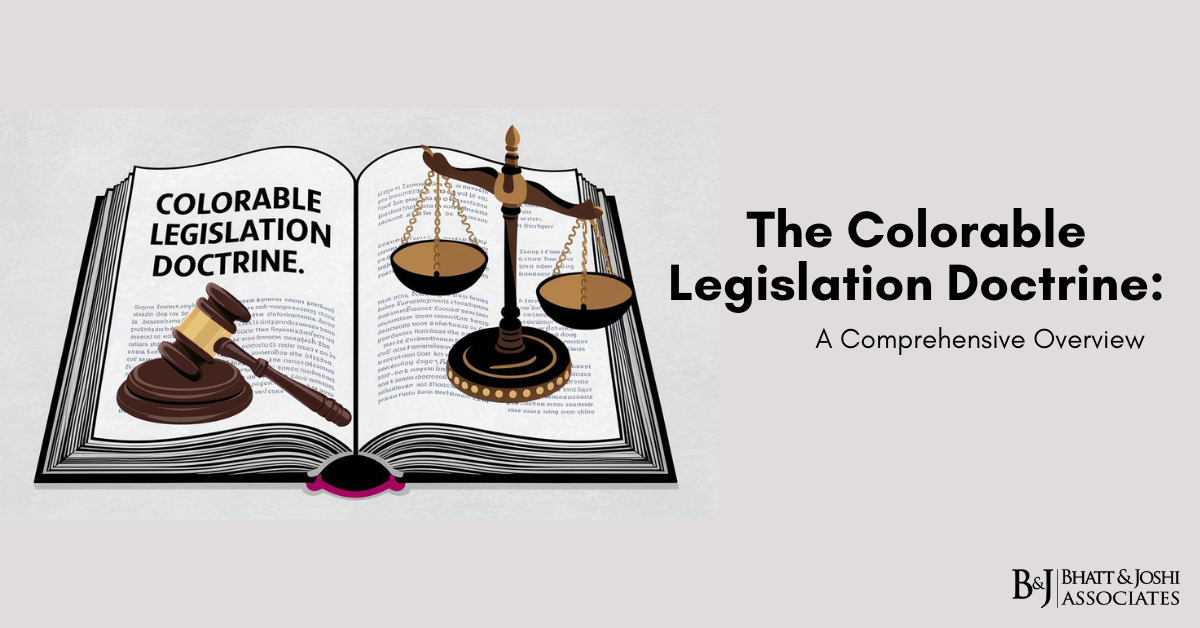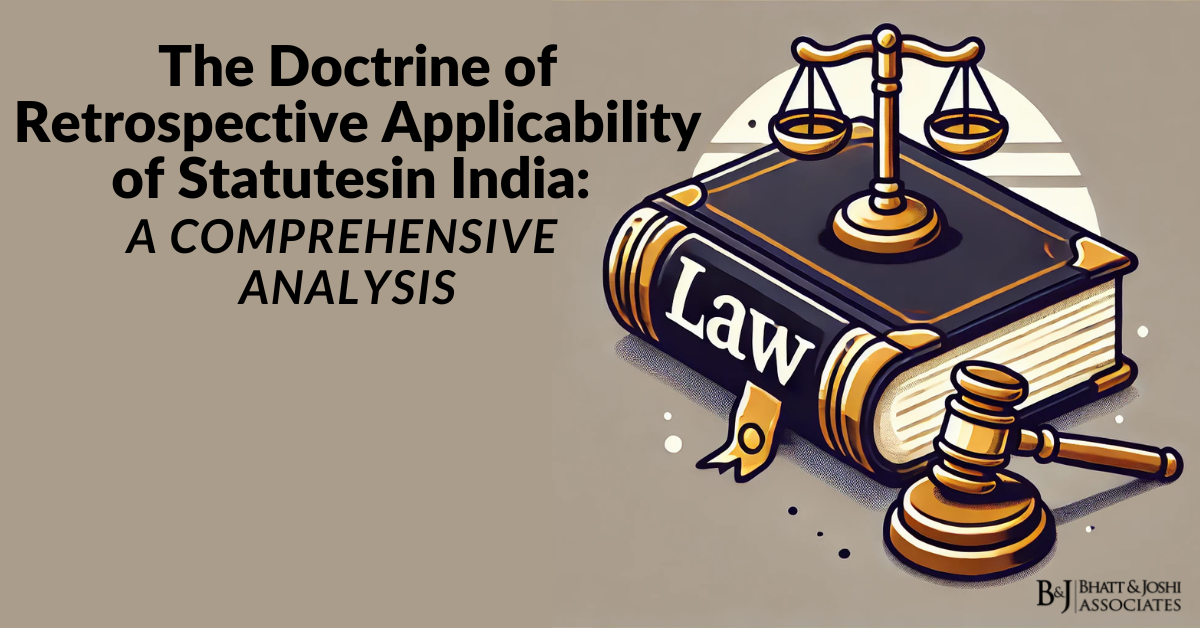Introduction
The colorable legislation doctrine is a fundamental concept in constitutional law, particularly within federal systems of government. This doctrine serves as a critical tool for courts to examine and evaluate the true nature and intent of legislative acts. At its core, the doctrine addresses the question of whether a piece of legislation is genuinely what it purports to be, or if it’s an attempt to circumvent constitutional limitations and achieve unauthorized purposes. The colorable legislation doctrine plays a crucial role in maintaining the delicate balance of power between different levels of government and ensuring that legislative bodies operate within their prescribed constitutional boundaries.
What is Doctrine of Colorable Legislation?
The term “colorable” in legal contexts refers to something that appears to be genuine on the surface but may not be so upon closer examination. In the context of legislation, a law is considered colorable if it seems to fall within the legislative body’s power but actually aims to achieve an unauthorized purpose or encroach upon areas outside its jurisdiction. The colorable legislation doctrine, therefore, is a legal principle that allows courts to look beyond the face value of a law and scrutinize its true nature, effects, and underlying intentions.
This doctrine is particularly relevant in federal systems where different levels of government have distinct and sometimes overlapping spheres of authority. It helps to ensure that each level of government stays within its constitutionally defined limits and doesn’t use clever drafting or indirect means to expand its power beyond what is permissible.
Historical Development
The colorable legislation doctrine has its roots in the early days of constitutional interpretation. As federal systems evolved and the complexities of governance increased, courts found themselves needing tools to address situations where legislatures might attempt to overstep their bounds in subtle or indirect ways.
In many common law jurisdictions, the doctrine’s development can be traced back to landmark cases where courts had to grapple with laws that seemed to serve one purpose on the surface but had deeper, potentially unconstitutional implications. These cases often involved disputes between federal and state or provincial governments, where one level of government was accused of encroaching on the other’s jurisdiction through ostensibly innocent legislation.
Over time, the doctrine has been refined and applied in various contexts, becoming an essential part of constitutional jurisprudence in many countries with federal systems. Its evolution reflects the ongoing challenge of maintaining clear divisions of power in complex modern governance structures.
Key Principles of the Doctrine
The colorable legislation doctrine is built on several key principles that guide its application. First and foremost is the principle of substance over form. This means that courts are not bound by the mere wording or superficial appearance of a law but are empowered to examine its practical effects and real-world implications.
Another crucial principle is the preservation of constitutional integrity. The doctrine serves as a safeguard against erosion of constitutional divisions of power, ensuring that the carefully crafted balance between different levels of government is maintained.
The principle of legislative intent also plays a significant role. Courts often seek to determine what the legislature truly aimed to achieve with a particular law, looking beyond stated objectives to uncover any hidden or ulterior motives.
Lastly, the doctrine embodies the principle of preventing indirect achievement of prohibited ends. It recognizes that what cannot be done directly should not be allowed to be done indirectly through clever legislative maneuvering.
Application in Constitutional Law
In constitutional law, the colorable legislation doctrine finds its most significant application in the realm of federalism and the division of powers. When a court is tasked with determining whether a law falls within the jurisdiction of the enacting body, it may employ this doctrine to look beyond the law’s apparent purpose.
For instance, if a federal government passes a law that claims to regulate interstate commerce but effectively controls intrastate matters typically left to state jurisdiction, a court might invoke the colorable legislation doctrine. The court would examine not just the stated intent of the law, but its practical effects and whether it represents an attempt by the federal government to expand its authority beyond constitutional limits.
Similarly, in cases where state or provincial governments enact laws that seem to address local matters but have significant impacts on areas of federal jurisdiction, the doctrine can be used to scrutinize these laws and potentially invalidate them if they’re found to be colorable.
The doctrine is also relevant in cases involving fundamental rights. If a government passes a law that ostensibly serves a legitimate purpose but indirectly infringes on constitutionally protected rights, courts may use the colorable legislation doctrine to strike down such laws.
Criteria for Identifying Colorable Legislation
Courts have developed several criteria to help identify colorable legislation. One of the primary considerations is the pith and substance of the law. This involves looking at the true nature and character of the legislation, beyond its superficial appearance. Courts examine the law’s dominant purpose and its practical effects to determine if it aligns with the stated intent or if it’s attempting to achieve something else.
Another important criterion is the proportionality of the law’s effects. If a law has effects that are disproportionate to its stated purpose or that significantly impact areas outside the enacting body’s jurisdiction, it may be deemed colorable.
The legislative history and context of the law are also crucial factors. Courts often examine debates, committee reports, and other materials that shed light on the legislature’s intent and the process of enacting the law.
Additionally, courts consider whether there are alternative, less intrusive means to achieve the stated objectives of the law. If a legislature chooses a more intrusive or far-reaching approach when less problematic alternatives are available, it may raise suspicions of colorable legislation.
Challenges in Applying the Doctrine
While the colorable legislation doctrine is a valuable tool in constitutional interpretation, its application is not without challenges. One of the primary difficulties lies in determining legislative intent. Legislatures are collective bodies, and discerning a unified intent behind a law can be complex. Moreover, stated intentions may not always align with unstated motivations.
Another challenge is the potential for judicial overreach. Critics argue that an overzealous application of the doctrine could lead to courts substituting their judgment for that of elected legislatures, raising concerns about the separation of powers.
The doctrine also faces challenges in rapidly evolving areas of law and governance. As new technologies and social issues emerge, the boundaries between different jurisdictions can become blurred, making it more difficult to apply traditional tests for colorable legislation.
Furthermore, in some cases, laws may have multiple purposes or effects, some within and some potentially outside the enacting body’s jurisdiction. Determining whether such laws are colorable can be a nuanced and complex task for courts.
Case Studies and Landmark Decisions
Several landmark cases have shaped the understanding and application of the colorable legislation doctrine. In many federal systems, these cases often involve disputes between national and subnational governments.
For example, in a hypothetical case, a national government might pass a law ostensibly aimed at regulating environmental standards but which effectively controls local land use planning, traditionally a matter for subnational governments. If challenged, a court might apply the colorable legislation doctrine to examine whether the law is a genuine environmental regulation or an attempt to expand federal control over local matters.
Another illustrative case might involve a state or provincial government enacting a law that claims to regulate local businesses but has significant impacts on interstate or interprovincial trade. In such a case, the court would need to determine whether the law is a legitimate exercise of local authority or a colorable attempt to regulate matters outside the state’s jurisdiction.
These case studies demonstrate how courts grapple with the complexities of modern governance and the often blurry lines between different jurisdictions. They highlight the importance of the colorable legislation doctrine in maintaining constitutional boundaries and preventing legislative overreach.
Comparative Perspectives
The application of the colorable legislation doctrine varies across different legal systems. In some federal countries, the doctrine is explicitly recognized and frequently applied, while in others, similar principles may exist under different names or as part of broader constitutional interpretation approaches.
For instance, in the United States, concepts similar to the colorable legislation doctrine are often discussed in terms of federal preemption or the Commerce Clause jurisprudence. In Canada, the doctrine is more explicitly recognized and has played a significant role in shaping the interpretation of the division of powers between federal and provincial governments.
In other federal systems, such as Australia or Germany, courts have developed their own approaches to examining the validity of laws that may encroach on different jurisdictions. While the specific terminology may differ, the underlying principle of scrutinizing laws for potential overreach is common across many federal systems.
Studying these comparative perspectives provides valuable insights into how different legal systems address the common challenge of maintaining constitutional boundaries in complex governance structures.
Criticisms and Debates
The colorable legislation doctrine is not without its critics. Some argue that the doctrine gives too much power to the judiciary, allowing unelected judges to second-guess the decisions of democratically elected legislatures. This criticism is part of the broader debate about the appropriate role of judicial review in a democratic society.
Others contend that the doctrine is too vague and subjective, leading to inconsistent application and unpredictable outcomes. They argue that it’s often difficult to definitively determine the true purpose or effect of a law, and that courts may be influenced by their own biases or policy preferences when applying the doctrine.
There’s also debate about the doctrine’s relevance in an era of increasingly complex and interconnected governance. Some scholars argue that strict adherence to jurisdictional boundaries may be counterproductive in addressing modern challenges that often require cooperation between different levels of government.
These criticisms and debates highlight the ongoing tension between maintaining constitutional integrity and allowing for flexible and effective governance in changing times.
Impact on Legislative Process
The existence of the colorable legislation doctrine has a significant impact on the legislative process. Lawmakers and legislative drafters must be cognizant of the doctrine when crafting laws, particularly in areas where jurisdictional boundaries may be unclear or contentious.
This awareness often leads to more careful and precise drafting of legislation. Lawmakers may include clear statements of purpose or intent in the text of the law or accompanying materials to help demonstrate that the legislation is not colorable.
The doctrine also influences how governments approach policy challenges that may cross jurisdictional lines. It may encourage intergovernmental cooperation and coordination to address issues that don’t neatly fit within traditional divisions of power.
Moreover, the potential for judicial scrutiny under the colorable legislation doctrine can serve as a check on legislative overreach, encouraging lawmakers to stay within their constitutional bounds even in the absence of immediate legal challenges.
Future Directions and Evolving Interpretations
As societies and governance structures continue to evolve, so too does the interpretation and application of the colorable legislation doctrine. Emerging technologies, global challenges like climate change, and increasingly interconnected economies are blurring traditional jurisdictional lines, necessitating new approaches to constitutional interpretation.
Some legal scholars advocate for a more flexible application of the doctrine that recognizes the need for cooperative federalism in addressing complex modern issues. Others argue for maintaining strict jurisdictional boundaries to preserve the integrity of federal systems.
The rise of supranational organizations and international treaties also raises new questions about how the colorable legislation doctrine applies in contexts where national sovereignty intersects with international obligations.
As courts continue to grapple with these issues, the colorable legislation doctrine is likely to evolve, potentially expanding to encompass new forms of legislative action and adapting to the changing nature of governance in the 21st century.
Conclusion
The colorable legislation doctrine remains a crucial tool in constitutional law, serving as a safeguard against legislative overreach and helping to maintain the delicate balance of power in federal systems. While its application can be complex and sometimes controversial, the doctrine plays an essential role in ensuring that governments operate within their constitutional bounds.
As legal systems continue to evolve, the colorable legislation doctrine will undoubtedly face new challenges and interpretations. However, its fundamental principle – that the substance of a law matters more than its form – is likely to remain a cornerstone of constitutional jurisprudence. By allowing courts to look beyond the surface of legislation to examine its true nature and effects, the doctrine helps to uphold the integrity of constitutional governance and protect against subtle erosions of constitutional principles.
In an era of increasingly complex governance challenges, the colorable legislation doctrine serves as a reminder of the importance of clear constitutional boundaries and the need for vigilance in maintaining them. As such, it will continue to be a vital concept for lawmakers, judges, and citizens alike in navigating the complexities of modern constitutional democracy.














